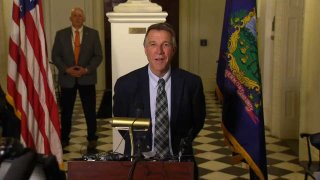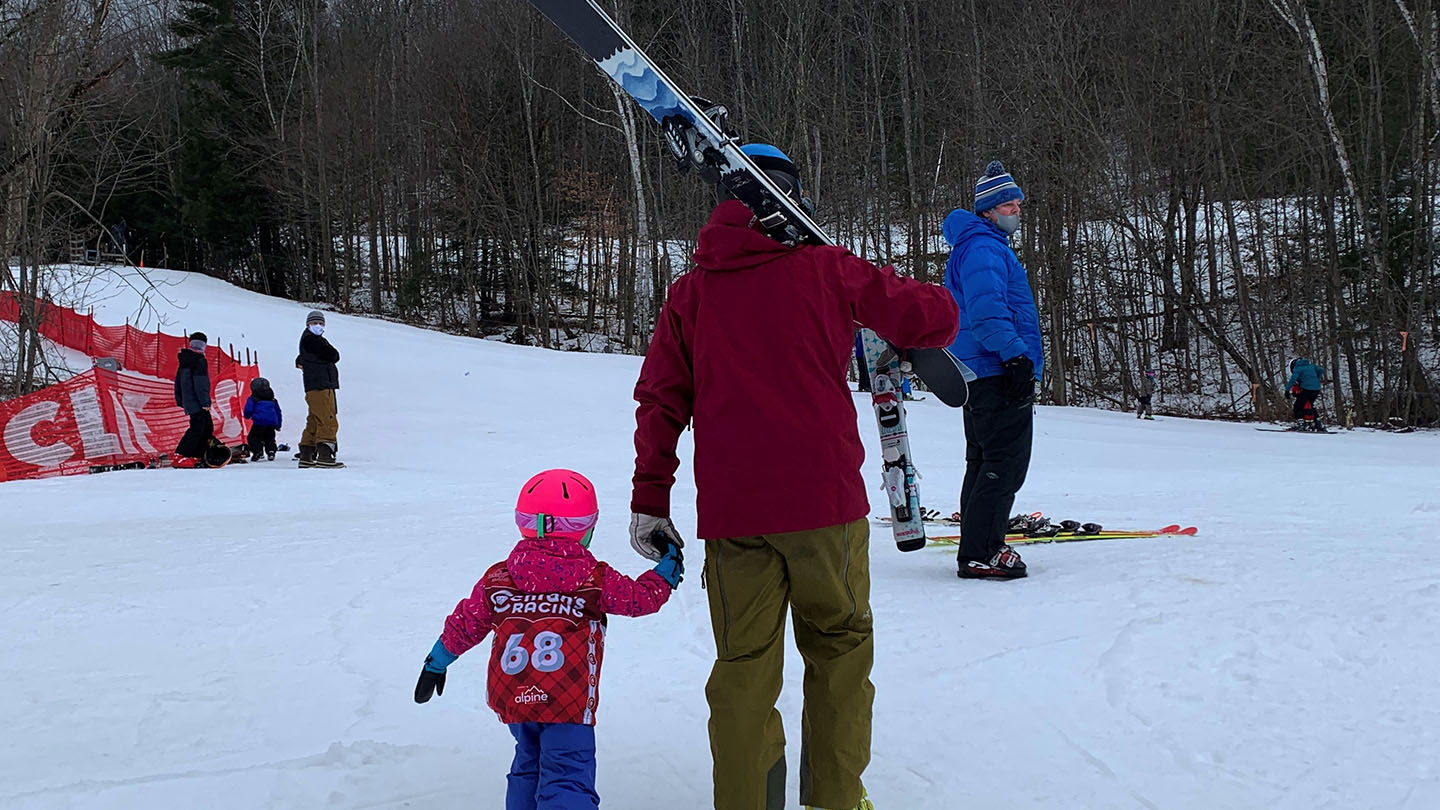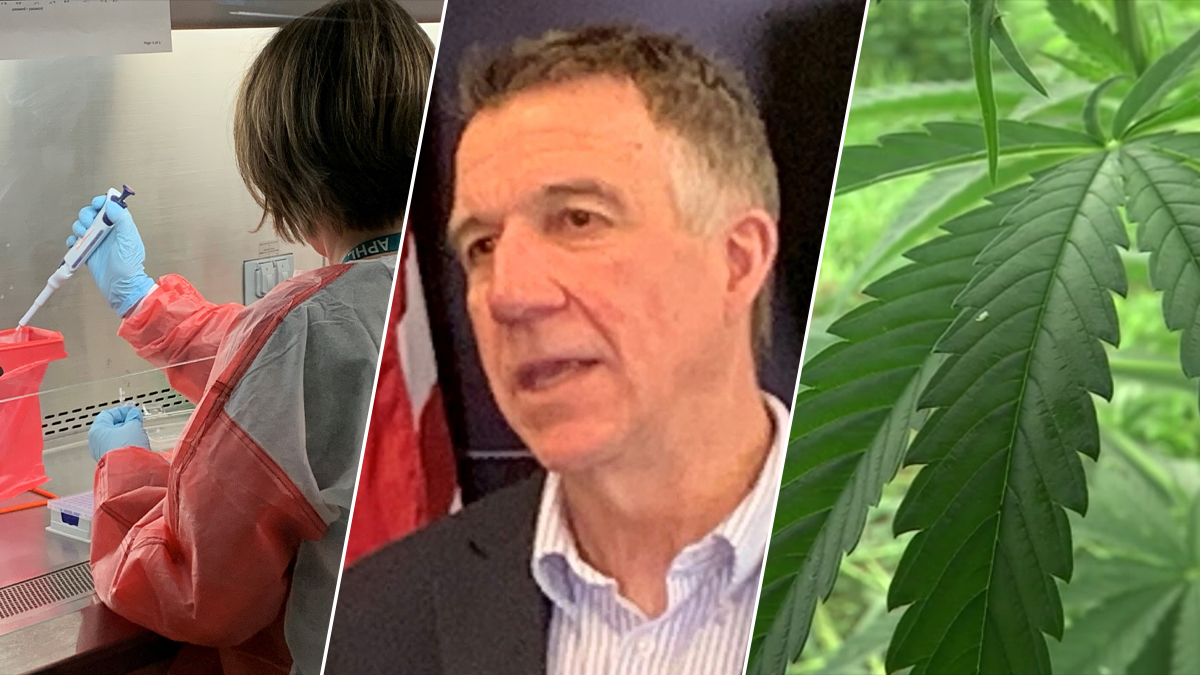
Nearly 10,000 people have gotten the coronavirus vaccine in Vermont to date, officials said Tuesday, as the state draws closer to determining who will be next in line for the vaccine.
Of the approximately 9,8000 Vermonters who have been vaccinated so far, 8,000 are in health care, 900 are EMS workers and another 900 are in long-term care. In all, Vermont has allocated nearly 32,000 doses of the vaccine, of which 24.2% has been shipped to hospitals and the remainder allocated to the federal pharmacy program.
In the meantime, Gov. Phil Scott urged people to "pay attention," and, "use common sense." Everyone should continue to avoid unnecessary gatherings or traveling out of state, Scott said, wear a mask and keeping your distance from others.
"We know these steps are the best way to help limit the spread of the virus while we wait for more vaccines and can get the majority of Vermonters vaccinated," Scott said. "This will take some time, but we're on the path of being able to better protect our most vulnerable from the risks of this virus and move closer to the end of the tunnel."
The state's vaccination plan is being implemented in phases, with high-risk healthcare workers and long term-care facility residents as the top priority.
Residents at 19 of the 37 skilled nursing facilities in Vermont received their first dose of the vaccine as of Tuesday, according to Secretary of the Agency Human Services Mike Smith. Officials expect to finished administering the first doses of the vaccine to all but one of the skilled nursing facilities by Jan. 8, according to Smith.
As of Monday, 14.8% of the phase-one priority group had been given the first dose and 1.4% of the total eligible population for the vaccine had received the first dose, Smith said.
The state's vaccine implementation advisory group will meet Wednesday to prepare its recommendations for the next phase. The advisory group's recommendation will be submitted to Scott and the immunization leadership team for consideration.
Vermont is preparing to begin its mass vaccination program, which will involve 12 locations where Vermonters will be able go to be vaccinated, including primary care providers, pharmacies and Health Department district office sites.
The sites will be capable of handling 300 people each twice a week or 7,200 vaccinations a week, according to Smith. Vaccines will be prioritized and given based on age," because the older you are, the more vulnerable you are to COVID-19," Smith said.
Vermont reported 82 new cases of COVID-19 and one death Tuesday, bringing the death toll to 130. December will be the deadliest month of the pandemic for Vermont, with 85% of deaths this month connected to a long-term care facilities.
There are 31 people who remain hospitalized and six in the intensive care units, according to Vermont Commissioner of Health Dr. Mark Levine.
"Our guiding north star in this endeavor is as you've heard, to prevent the most deaths," Levine said. "The complex work of prioritization is essential in these early stages. It must be done with careful consideration to ensure there's equitable and systematic access as the amount of vaccine coming into Vermont increases with each shot. We are that much closer to reducing the risk of exposure to where we can begin to return to a state closer to normal."
Of the 41 outbreaks in Vermont being tracked by health officials, about 14 are in long-term care facilities, Levine said. Another 12 involve school or childcare, five are at work sites, six in health or home care, three are related to private events or social gatherings, and one is categorized as other.
"The levels of illness and deaths among Vermont's long-term care facilities are usually not due to problems at these facilities, nor a reflection on the staff or administrators," Levine said. "Instead, they reflect the fact that the virus is circulating in our communities have levels - far higher than during the summer and early fall, which means exposures happen."
For the second straight week, officials reported a decline in Vermont's case growth and positivity rate.
"It's too early to see the impact of what holiday travel or larger gatherings than we had suggested will have, so we'll continue to watch to see what happens over the next few weeks," Scott said. "The number of cases may go back up after the holidays. Our hope, though, is that will continue seeing a plateau, or maybe even a decline in Vermont and throughout the region, but meanwhile we're holding our breath a bit."
Meanwhile, more stringent holiday gathering restrictions remain in place in Vermont through the New Year. The new rules, announced Tuesday, allow households to choose one other "trusted" household to gather with from through Jan. 2, 2021.
Gathering with more than one household, even if it's on different days, is not permitted. If the one other household is from out-of-state, everyone from both households must quarantine for seven days and get a test or quarantine for 14 days.
Scott also announced Tuesday that youth sports can start again with no-contact practices and Vermonters may resume outdoor activities with those outside their household, as long as physical distancing, masking and other precautions are observed.
Vermont officials encouraged residents not to call looking for a vaccine, as those in line will be contacted. The state has also launched an online dashboard to provide ongoing updates and information about vaccine distribution.



